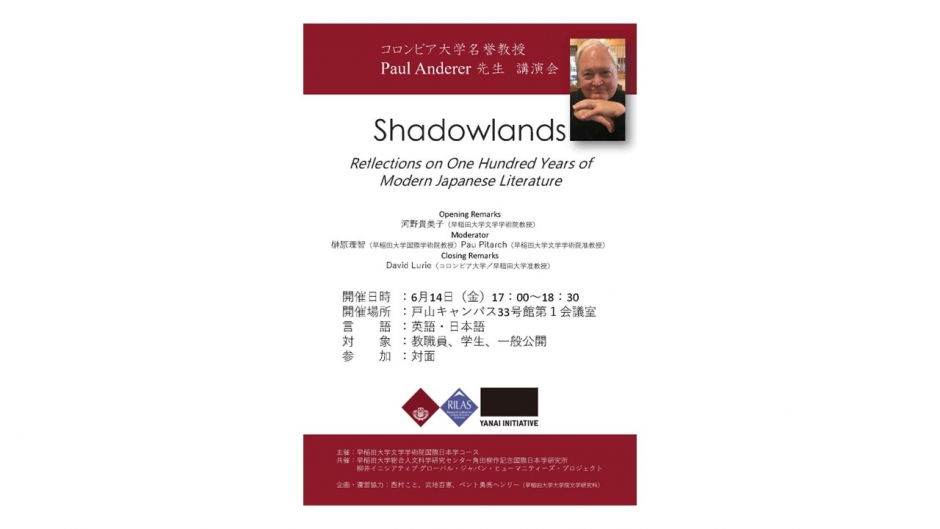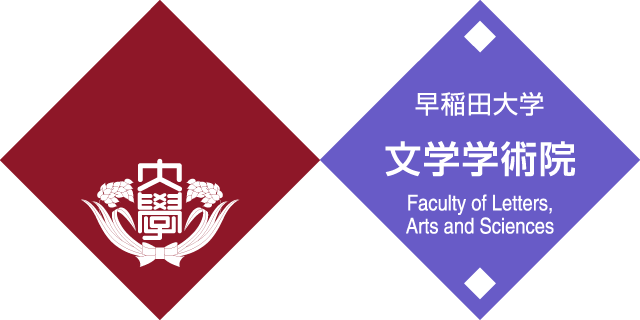- News
- Event Report:「Shadowlands : Reflections on One Hundred Years of Modern Japanese Literature」6/14
Event Report:「Shadowlands : Reflections on One Hundred Years of Modern Japanese Literature」6/14

- Posted
- 2024年7月30日(火)
On June 14, 2024, the Global Japanese Literary and Cultural Studies welcomed Paul Anderer, Professor Emeritus of the Department of East Asian Languages and Cultures at Columbia University, to deliver a lecture titled “Shadowlands: Reflections on One Hundred Years of Modern Japanese Literature.”
At the beginning of his lecture, Anderer revisited the period regarded as the beginning of modern Japanese literature. He highlighted that, even beyond the genre of “I-novel,” the writers of modern Japanese literature (predominantly male) attempted to depict life “as it is.” They mainly aimed to tell a very personal and realistic (or reality-based) story, with a non-heroic protagonist. Anderer discussed novels by naturalists such as Tayama Katai as the prime examples of modern literature formed under these premises.
The metropolis Tokyo was chosen as the setting for such realistic stories. However, Anderer pointed out that Tokyo was also a “shadow city” that allowed writers such as Akutagawa Ryunosuke to create non-reality-based stories. He also referred to Okakura Tenshin’s Cha no Hon (The Book of Tea) (1906) along with literary works, and argued that the space of the tearoom played a role similar to that of the refrigerator in Kitchen depicted by Banana Yoshimoto in the modern age. This “shadowlands” presented various possibilities beyond naturalistic realism, and anything can happen in “shadows.” We can also find this “shadow” in Natsume Soseki’s Kokoro, which is considered to be one of the representative works of modern Japanese literature. Living in a dark room, “Sensei” lived his life in the shadows, both physically and mentally, after being betrayed by his family and by betraying “K” further.
According to Anderer, since the late Meiji period, and especially after the Great Kanto Earthquake of 1923, Japanese literature has ventured into the “shadowlands,” a world not as clear-cut as before. Kawabata Yasunari ‘s Asakusa Kurenaidan (The Scarlet Gang of Asakusa) (1929) was cited as an example of a departure from realistic narrative in both form and content. The silent film Kurutta Ichi Peji (A Page of Madness) (1926), directed by Kinugasa Teinosuke, was also highlighted as a significant work that illustrates the “shadowlands” well. Andrer emphasized that film was a medium that began to challenge the privileged status of the novel at this time, and this film in particular depicts the cultural aftershocks of the Great Kanto Earthquake.
After the earthquake, through the ruins of Tokyo and Yokohama, modernity came to be reexamined across various media. As a result, the movement toward the “shadowlands,” which began in the late Meiji period, was accelerated by the destruction caused by the earthquake. And, as mentioned above, New Sensationalist writers and filmmakers began to explore “unreal” stories more rigorously.
The lecture was attended by professors and graduate students from Stanford University and Columbia University, as well as from the Waseda University. In the Q&A session, a meaningful discussion ensued.
(Clabal-J Doctor SUN, Lujia)
(Global-J Doctor MARTINEZ MURILLO, Tomas)
Event Overview
- Date and time:June, 14, 2024, 17:00〜18:30(JST)
- Format:In-person
- Venue:Conference Rm. 1, Bldg. 33, 3rd Fl., Toyama Campus
- Open to the public
- Language: English and Japanese
- Organized by Global Japanese Literary and Cultural Studies
Co-organized by The Ryusaku Tsunoda Center of Japanese Culture and The Yanai Initiative for Globalizing Japanese Humanities
Planning and management support:NISHIMURA, Koto、HAMACHI, Momoe、BENT, Yusuke Henry(Global-J)
- Tags
- Event Reports
